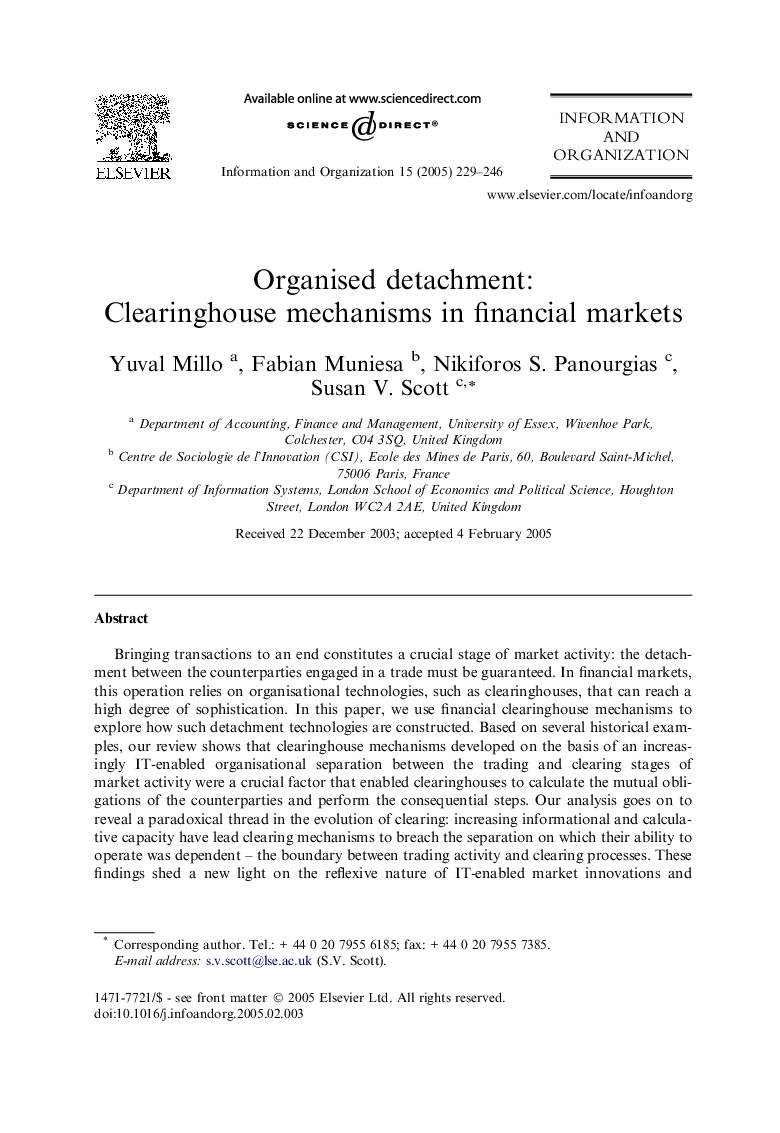| Article ID | Journal | Published Year | Pages | File Type |
|---|---|---|---|---|
| 10368266 | Information and Organization | 2005 | 18 Pages |
Abstract
Bringing transactions to an end constitutes a crucial stage of market activity: the detachment between the counterparties engaged in a trade must be guaranteed. In financial markets, this operation relies on organisational technologies, such as clearinghouses, that can reach a high degree of sophistication. In this paper, we use financial clearinghouse mechanisms to explore how such detachment technologies are constructed. Based on several historical examples, our review shows that clearinghouse mechanisms developed on the basis of an increasingly IT-enabled organisational separation between the trading and clearing stages of market activity were a crucial factor that enabled clearinghouses to calculate the mutual obligations of the counterparties and perform the consequential steps. Our analysis goes on to reveal a paradoxical thread in the evolution of clearing: increasing informational and calculative capacity have lead clearing mechanisms to breach the separation on which their ability to operate was dependent - the boundary between trading activity and clearing processes. These findings shed a new light on the reflexive nature of IT-enabled market innovations and emphasise their role in re-introducing new forms of disorganisation back into contemporary financial markets.
Related Topics
Physical Sciences and Engineering
Computer Science
Information Systems
Authors
Yuval Millo, Fabian Muniesa, Nikiforos S. Panourgias, Susan V. Scott,
